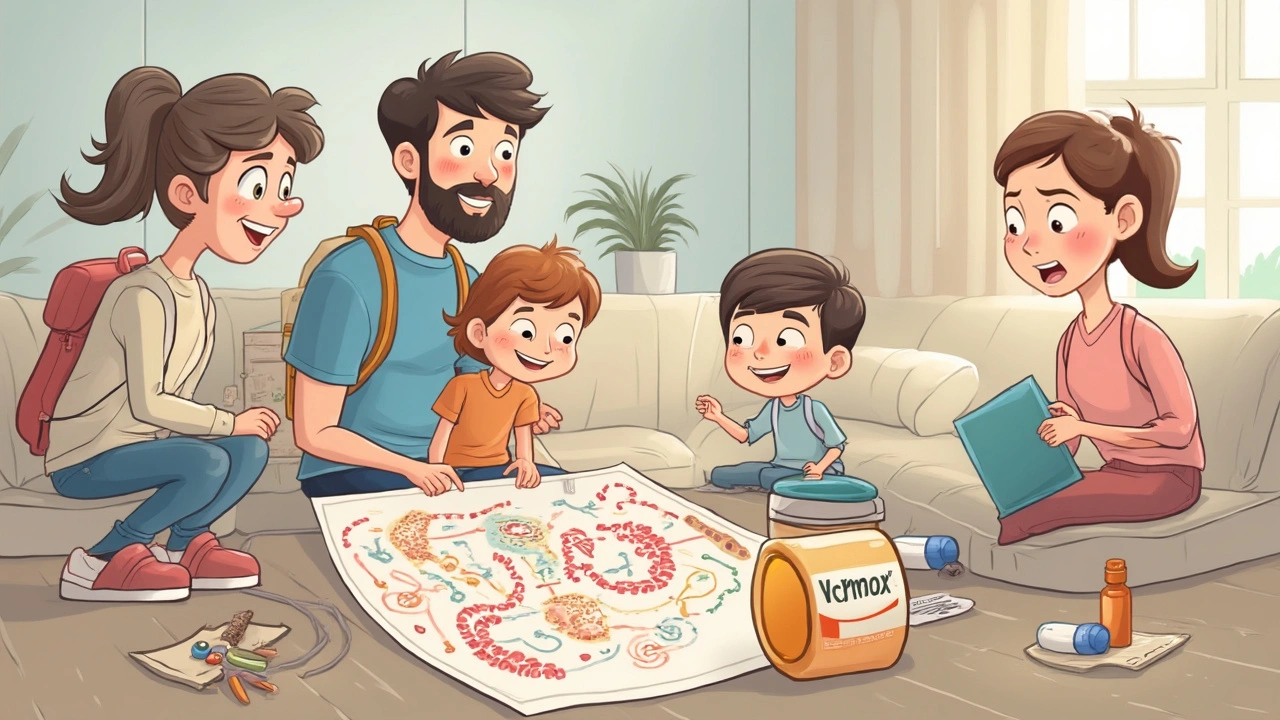
Discover how Vermox helps treat worm infections like pinworm. Learn about its uses, tips for safe deworming, dosing facts, and who should avoid it.
Pinworms are tiny worms that love hanging out in the intestines, especially of kids. They cause itching around the bottom, trouble sleeping, and sometimes a mild tummy ache. The good news? They’re easy to treat once you spot the signs.
Most infections happen in schools, day‑cares, or any place where kids are close together. The eggs are super sticky, so they can live on bedding, toys, and even bathroom surfaces for weeks. That’s why pinworms spread so fast—people often pick up the eggs without even realizing it.
The cycle starts when an infected person scratches the itchy area, then touches their mouth or another surface. The eggs, which are invisible to the eye, stick to hands, clothing, and bed sheets. If someone else touches those contaminated spots and later puts their hand in their mouth, the eggs hatch inside the gut and the cycle repeats.
Eggs don’t need a warm environment to survive, so they can linger on bedroom curtains, vacuum cleaners, or even on your phone screen. That’s why you’ll see pinworm outbreaks pop up in households with a single infected child—everyone shares the same living space.
The usual medicine is a single dose of an over‑the‑counter dewormer, followed by a second dose two weeks later to kill any newly hatched worms. It’s safe for most ages, but you should read the label and follow the dosing guide.
While the meds work, you’ll need to break the infection cycle. Wash all bed linens, pajamas, and towels in hot water every day for a week. Vacuum floors and upholstered furniture to pick up stray eggs. Kids should trim their nails short and avoid nail‑biting.
Hand‑washing is the simplest defense. Teach everyone to wash hands with soap for at least 20 seconds after using the toilet and before meals. If hand‑washing is a hassle, keep a bottle of hand sanitizer handy for quick clean‑ups.
For families with an infected child, it’s wise to treat the whole household—sometimes the adult carriers don’t show any symptoms. After treatment, keep an eye on the itching. If it continues beyond a month, talk to a pharmacist or doctor for a follow‑up.
Pinworms are annoying but not dangerous. With a quick med dose, thorough cleaning, and good hygiene habits, you can clear an outbreak fast and keep it from coming back. Stay proactive and your household will stay itch‑free.

Discover how Vermox helps treat worm infections like pinworm. Learn about its uses, tips for safe deworming, dosing facts, and who should avoid it.